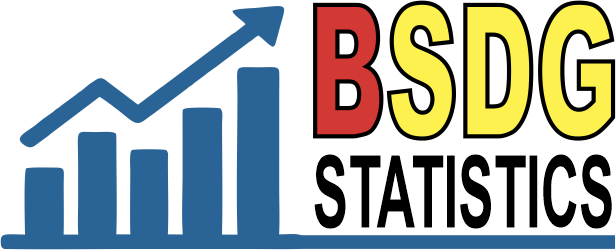EVALUASI KELAYAKAN PROYEK DAN PERANKINGAN AREA PROSPEK PANAS BUMI KANDIDAT LOKASI PROGRAM GOVERNMENT DRILLING
EVALUATION OF FEASIBILITY AND RANKING OF GEOTHERMAL PROSPECT AREA CANDIDATES FOR GOVERNMENT DRILLING PROGRAM LOCATIONS
Abstract
Government drilling is a geothermal exploration well drilling program carried out by the government. For planning, it is necessary to rank candidate prospect areas to be included in the program. This study ranked twenty candidate drilling sites using the incremental internal rate of return or incremental IRR method from discounted cash flow (DCF) calculations. The stages for the method are calculating project value and feasibility based on profitability parameters in each prospect area and calculating and ranking based on incremental IRR. As a result, based on the value of the profitability parameter, only two candidate areas for the program are feasible based on the project's IRR and NPV values, namely Nage and Mount Galunggung. Meanwhile, based on the BCR value, in addition to those two locations, two prospect areas are categorized as feasible, namely Bittuang and Mount Papandayan. Thus, Nage and Mount Galunggung are financially viable, and Bittuang and Mount Papandayan are economically viable. Improving the financial viability of Bittuang and Gunung Papandayan requires other fiscal incentives. For ranking, the results based on incremental IRR calculations and IRR result in the same order for the top four or the viable projects. The same results are because of their homogeneous project type, which is a geothermal project. Based on the results of this study, it is recommended to re-evaluate candidate prospect area locations for the program. It is because out of twenty candidate locations, only two are financially viable, and four are economically viable. Choosing the right location is one of the keys to the success of this program.
Downloads
References
Asian Development Bank, 2015. Unlocking Indonesia’s Geothermal Potential. Asian Development Bank.
Badan Geologi, 2022. Peta Distribusi dan Sumber Daya Panas Bumi Indonesia 2022. Bandung.
Badan Geologi, 2016. Peta Distribusi dan Sumber Daya Panas Bumi Indonesia 2016. Bandung.
Direktorat Panas Bumi, 2023. Pengembangan Panas Bumi di Indonesia. Jakarta.
Direktorat Panas Bumi, 2022. Pengembangan Panas Bumi di Indonesia. Jakarta.
Direktorat Panas Bumi, 2016. Proposed Methodology for Determining Fixed Tariffs for Geothermal Power Projects in Indonesia. Jakarta
Kementerian ESDM, 2017. Review of the Target of Geothermal Development Plan. Jakarta.
Kementerian ESDM, 2007. Master Plan Study for Geothermal Power Development in the Republic of Indonesia. Jakarta.
Nugraha, H., Saefulhak, Y., Pangaribuan, B., 2017. A Study on the Impacts of Incentives to the Geothermal Energy Electricity Price in Indonesia using Production-based Cost Approach. The 5th Indonesia International Geothermal Convention & Exhibition (IIGCE). Jakarta.
Pemerintah Indonesia, 2022. Peraturan Presiden Nomor 112 Tahun 2022 tentang Percepatan Pengembangan Energi Terbarukan untuk Penyediaan Tenaga Listrik. Jakarta.
Pemerintah Indonesia, 2021. Undang-Undang Nomor 7 Tahun 2021 tentang Harmonisasi Peraturan Perpajakan. Pemerintah Indonesia. Jakarta
Pemerintah Indonesia, 2014. Undang-Undang Nomor 21 tahun 2014 tentang Panas Bumi. Pemerintah Indonesia. Jakarta
Pemerintah Indonesia, 2006. Peraturan Presiden Republik Indonesia Nomor 5 Tahun 2006 tentang Kebijakan Energi Nasional. Jakarta.
PT PLN, 2021. Rencana Usaha Penyediaan Tenaga Listrik (RUPTL) PT Perusahaan Listrik Negara (Persero) Tahun 2021 sampai dengan Tahun 2030. Jakarta.
Purwanto, E.H., Suwarno, E., Hakama, C., Pratama, A.R., Herdiyanto, B., 2020. An Updated Statistic Evaluation of Drilling Performance, Drilling Cost and Well Capacity of Geothermal Fields in Indonesia. Proceedings World Geothermal Congress.
Pusat Sumber Daya Mineral Batubara Panas Bumi, 2021. Penentuan Lokasi Untuk Program Pengeboran Sumur Eksplorasi Panas Bumi Oleh Pemerintah. Bandung.
Quinlivan, P., 2009. Assessment of Current Costs of Geothermal Power Generation in New Zealand (2007 Basis). New Zealand Geothermal Association.
Sinclair Knight Merz, 2013. Geothermal Tariff Study. Jakarta.
Partowidagdo, W., 2001. Pengelolaan Lapangan Minyak dan Gas Bumi. ITB, Bandung.
Copyright (c) 2024 Buletin Sumber Daya Geologi

This work is licensed under a Creative Commons Attribution-NonCommercial-ShareAlike 4.0 International License.
Authors whose manuscripts are published agree to the following terms:
The publication rights of all journal manuscript materials published on the Buletin Sumber Daya Geologi website are held by the editorial board with the knowledge of the author (moral rights remain with the manuscript’s author).
The formal legal provisions for access to digital articles in this electronic journal are subject to the terms of the Creative Commons Attribution-ShareAlike (CC BY-SA) license. This means that Buletin Sumber Daya Geologi has the right to store, convert media/formats, manage in the form of a database, maintain, and publish the article without requesting permission from the author, as long as the author’s name is cited as the copyright holder.
Manuscripts published in both print and electronic formats are open access for educational, research, investigative, and library purposes. Beyond these purposes, the editorial board is not responsible for any violations of copyright law.















